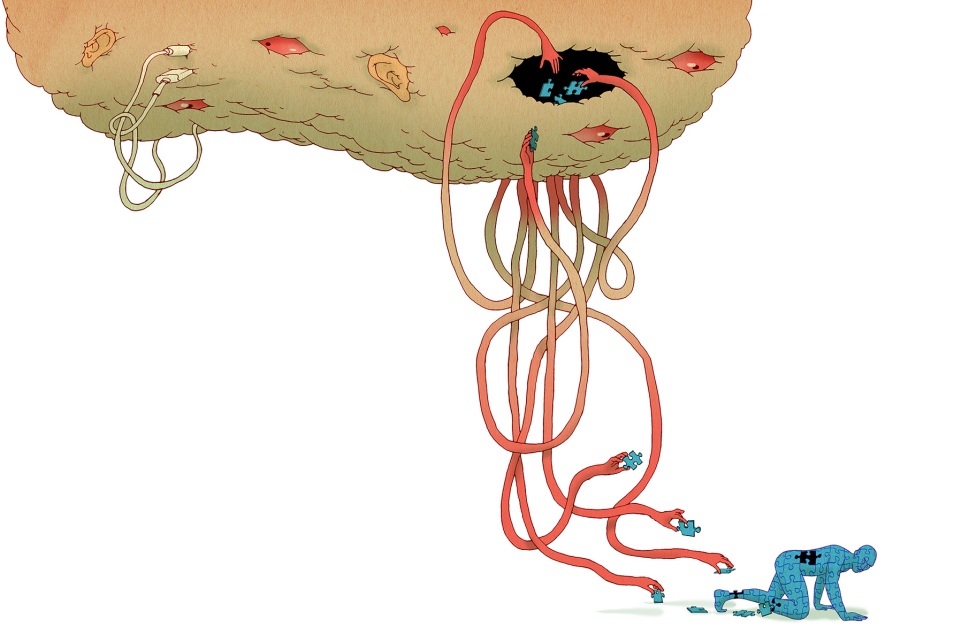Can a brain’s connectome be preserved forever?
By Michael Shermer , SKEPTIC, on February 1, 2016

Can Our Minds Live Forever?
The soul is the pattern of information that represents you—your thoughts, memories and personality—your self. There is no scientific evidence that something like soul stuff exists beyond the brain’s own hardwiring, so I was curious to visit the laboratories of 21st Century Medicine in Fontana, Calif., to see for myself an attempt to preserve a brain’s connectome—the comprehensive diagram of all neural synaptic connections.
This medical research company specializes in the cryopreservation of human organs and tissues using cryoprotectants (antifreeze). In 2009, for example, the facility’s chief research scientist Gregory M. Fahy published a paper in the peer-reviewed journal Organogenesis, documenting how his team successfully transplanted a rewarmed rabbit kidney after it had been cryoprotected and frozen to −135 degrees Celsius through the process of vitrification, “in which the liquids in a living system are converted into the glassy state at low temperatures.”
Can brains be so preserved? Fahy and his colleague Robert L. McIntyre are now developing techniques that they hope will win the Brain Preservation Technology Prize, the brainchild of neuroscientist Kenneth Hayworth (I’m on their advisory board as the advocatus diaboli). As I write this, the prize is currently valued at more than $106,000; the first 25 percent of the award will be for the complete preservation of the synaptic structure of a whole mouse brain, and the other 75 percent will go to the first team “to successfully preserve a whole large animal brain in a manner that could also be adopted for humans in a hospital or hospice setting immediately upon clinical death.”
I witnessed the infusion of a rabbit brain through its carotid arteries with a fixative agent called glutaraldehyde, which binds proteins together into a solid gel. The brain was then removed and saturated in ethylene glycol, a cryoprotective agent eliminating ice formation and allowing safe storage at −130 degrees C as a glasslike, inert solid. At that temperature, chemical reactions are so attenuated that it could be stored for millennia. If successful, would it be proof of concept?
Think of a book in epoxy resin hardened into a solid block of plastic, McIntyre told me. “You’re never going to open the book again, but if you can prove that the epoxy doesn’t dissolve the ink the book is written with, you can demonstrate that all the words in the book must still be there … and you might be able to carefully slice it apart, scan in all the pages, and print/bind a new book with the same words.” Hayworth tells me that the rabbit brain circuitry he examined through a 3-D scanning electron microscope “looks well preserved, undamaged, and it is easy to trace the synaptic connections between the neurons.”
This sounds promising, but I have my doubts. Is a connectome precisely analogous to a program that can be uploaded in machine-readable format into a computer? Would a connectome so preserved and uploaded into a computer be the same as awakening after sleep or unconsciousness? Plus, there are around 86 billion neurons in a human brain with often 1,000 or more synaptic connections for each one, for a total of 100 trillion connections to be accurately preserved and replicated. Staggering complexity. And this doesn’t include the rest of the nervous system outside the brain, which is also part of your self that you might want resurrected.
Hayworth admitted to me that a “future of uploaded posthumans is probably centuries away.” Nevertheless, he adds, “as an atheist and unabashed materialist neuroscientist, I am virtually certain that mind uploading is possible.” Why? Because “our best neuroscience models say that all these perceptual and sensorimotor memories are stored as static changes in the synapses between neurons,” which is what connectomics is designed to record and preserve, allowing us to “‘hit pause’ for a few centuries if we need to.” Imagine a world in which “the fear of death, disease and aging would have been mostly removed,” he says.
It sounds utopian, but there’s something deeply moving in this meliorism. “I refuse to accept that the human race will stop technological and scientific progress,” Hayworth told me. “We are destined to eventually replace our biological bodies and minds with optimally designed synthetic ones. And the result will be a far healthier, smarter and happier race of posthumans poised to explore and colonize the universe.”
Per audacia ad astra.
Update (2/9/16): On January 29, 2016, Robert McIntyre and Greg Fahy won the Small Mammal Brain Preservation Prize for their work preserving rabbit brains. The winning rabbit brain was in fact the one that this author witnessed while writing this article. The prize committee’s evaluation of 21st Century Medicine’s rabbit brain can be found here and the scientific paper describing the winning technique can be found here. Robert McIntyre has since gone on to start a neuroscience company called Nectome to further develop aldehyde-atabilized cryopreservation.


